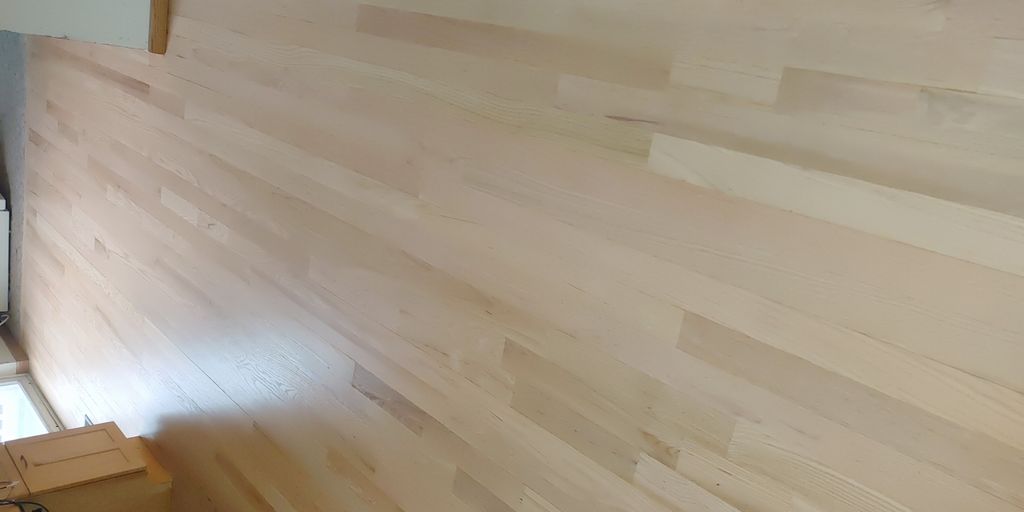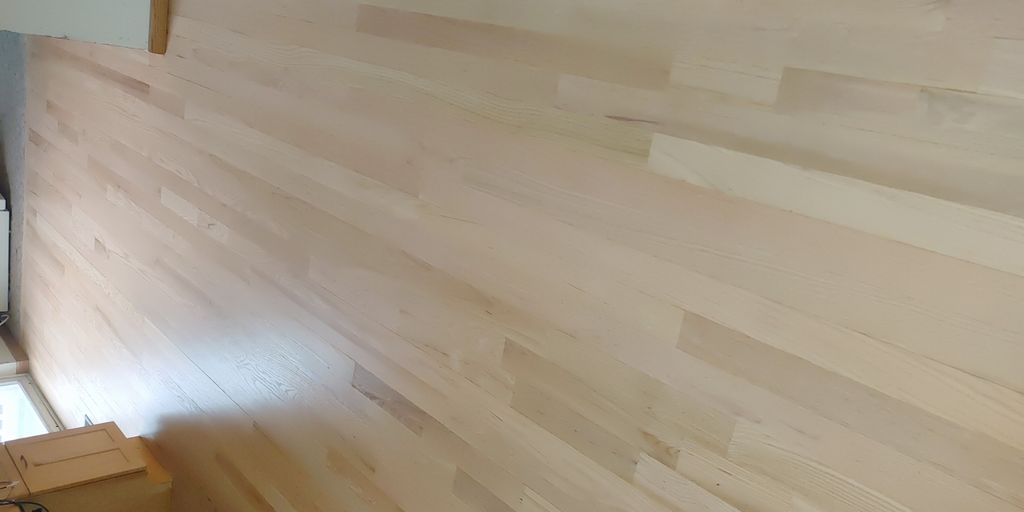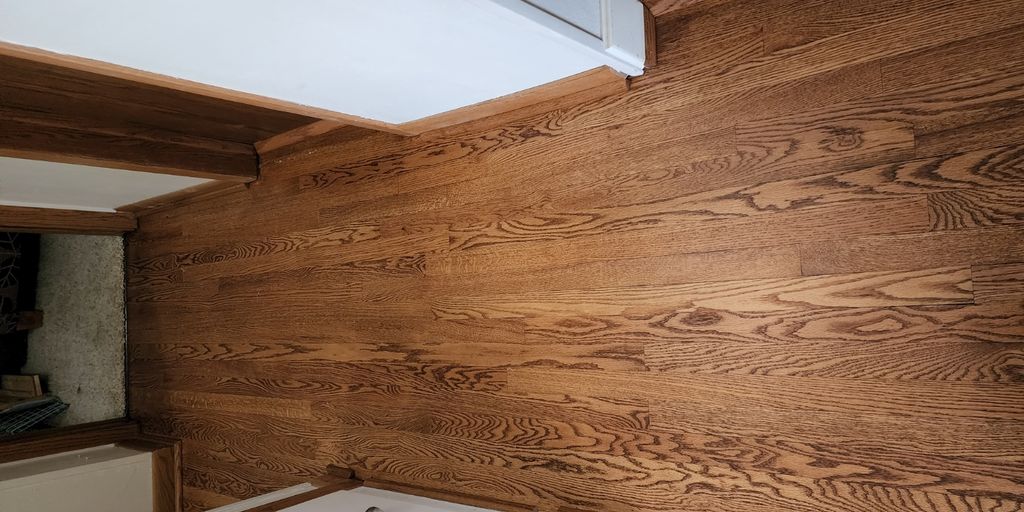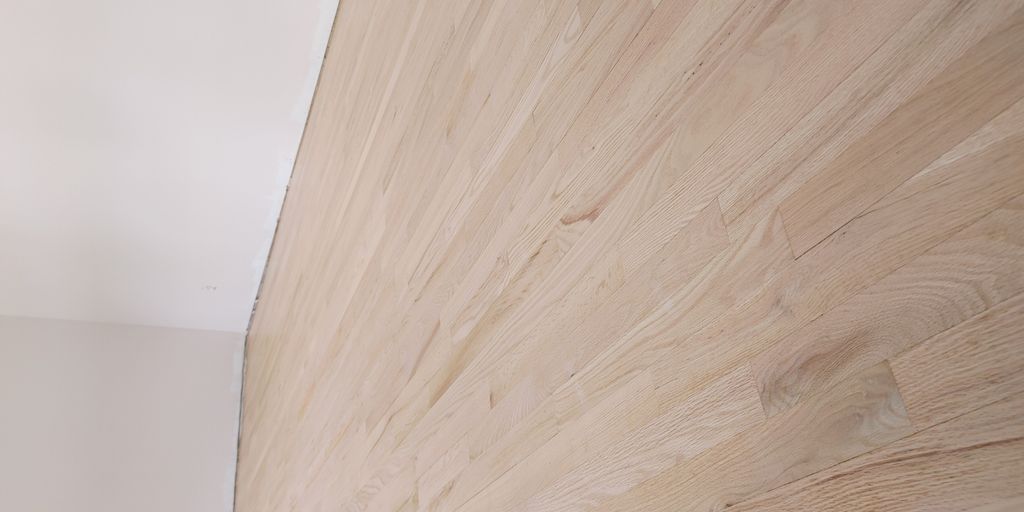Understanding Different Types of Flooring to Go
Hardwood Flooring: Timeless Elegance and Durability
Hardwood flooring is often seen as the gold standard for floors, bringing a touch of natural beauty and warmth to any room. With a wide array of wood species like oak, maple, and cherry, each offering unique grain patterns and colors, it’s no wonder hardwood is a popular choice. The durability of hardwood flooring is unmatched, as it can be refinished multiple times, extending its life for decades. However, it’s worth noting that hardwood isn’t the best friend to moisture, making it less suitable for bathrooms or basements.
Thank you for reading this post, don't forget to subscribe!Laminate Flooring: Affordable and Versatile
If you’re looking for a budget-friendly alternative to hardwood, laminate flooring might just be the answer. It mimics the look of real wood or even stone, providing a stylish appearance without the hefty price tag. Laminate is also quite durable, resisting scratches and stains, which makes it a great option for high-traffic areas. Plus, it’s easy to install, often making it a favorite among DIY enthusiasts. Just remember, while it’s more resistant to moisture than hardwood, it’s not completely waterproof.
Vinyl Flooring: Water-Resistant and Stylish
Vinyl flooring has come a long way from its past iterations. Today, it offers a wide range of styles that can mimic anything from wood to stone. What makes vinyl stand out is its water resistance, making it perfect for kitchens, bathrooms, and basements. It’s also soft underfoot, providing comfort as you walk across it. Vinyl flooring is easy to clean and maintain, making it a practical choice for busy households. However, it may not add as much value to your home as natural materials like hardwood.
When choosing flooring, consider the room’s purpose and the level of foot traffic it will endure. Each type of flooring has its strengths and weaknesses, so weigh these against your lifestyle and aesthetic preferences to make the best choice for your home.
Choosing the Right Flooring to Go for Each Room
Living Room Flooring: Creating a Cozy Ambiance
The living room is where you unwind and entertain, so picking the right flooring is key. Hardwood floors are a classic choice, offering both warmth and sophistication. They’re tough and can handle the hustle and bustle of daily life. If you’re after something softer, carpet is a great option, adding comfort and a welcoming vibe. For a mix of both, consider laminate—it’s durable and looks like wood but is easier on the wallet.
Kitchen Flooring: Balancing Style and Functionality
Kitchens see a lot of action, from spills to heavy foot traffic. You need something that can take it all. Tile is a solid pick because it’s water-resistant and easy to clean. Vinyl plank flooring is another smart choice, combining style with practicality. It mimics the look of wood or stone but is softer underfoot and easier to maintain. For those who want a bit of everything, laminate is a versatile option that stands up to moisture and looks good doing it.
Bathroom Flooring: Prioritizing Water Resistance
Bathrooms demand flooring that can handle moisture without fuss. Ceramic or porcelain tiles are popular because they’re waterproof and come in a variety of styles. Vinyl is also a contender, offering water resistance and a softer feel. For a more modern look, luxury vinyl tiles (LVT) provide durability and style, mimicking high-end materials without the hefty price tag.
Remember, the right flooring can transform a room. It’s not just about looks, but how it feels and functions day-to-day. Choose wisely and enjoy the comfort and style of your revamped spaces.
Factors to Consider When Selecting Flooring to Go
Budget Considerations: Finding Cost-Effective Options
When it comes to flooring, your budget is the starting point. Knowing your financial limits can save you from overspending. Flooring costs can vary wildly, from luxury hardwoods to budget-friendly laminates. Make sure to factor in not just the cost of materials, but also installation, maintenance, and potential future repairs. If you’re looking for affordable yet stylish options, discover affordable vinyl plank flooring nearby for a great balance between cost and aesthetics.
Lifestyle Needs: Durability for Kids and Pets
Your flooring choice should match your lifestyle. Got kids or pets? You’ll need something durable and easy to clean. Hardwoods and tiles are great, but they might not be the best for high-traffic areas with lots of spills and scratches. Consider exploring the best hardwood flooring options for a durable choice that can withstand the hustle and bustle of family life.
Climate and Environment: Choosing Suitable Materials
Where you live plays a big role in flooring selection. Humidity, temperature changes, and even sunlight can affect different materials. For instance, in humid areas, you might want to avoid certain woods that can warp. Instead, look into water-resistant options like tile or vinyl, which are perfect for bathrooms and kitchens. For more personalized advice, contact Texas First Floors DWF for a free consultation on the best materials for your local climate.
Flooring isn’t just about looks—it’s about finding the right fit for your home and lifestyle. Take your time to assess these factors, and you’ll end up with a floor that not only looks great but also lasts for years.
Exploring Eco-Friendly Flooring to Go Options

Bamboo Flooring: Sustainable and Stylish
Bamboo flooring is a fantastic choice if you’re aiming for an eco-friendly home. It’s not technically wood, but it behaves a lot like it. Bamboo grows incredibly fast, which makes it a super renewable resource. This means you can enjoy the durability and look of wood without feeling guilty about the environmental impact. Bamboo floors are tough and can handle heavy foot traffic, and they come in a range of colors from light to dark.
- Fast Growth: Bamboo grows much faster than traditional hardwood trees, making it a sustainable option.
- Durability: Despite being technically a grass, bamboo is as tough as many hardwoods.
- Variety: Available in various shades and styles, it’s easy to find bamboo flooring that fits your home’s aesthetic.
Cork Flooring: Comfortable and Renewable
Cork flooring might not be the first thing that comes to mind, but it’s a hidden gem in sustainable flooring. Harvested from the bark of cork oak trees, cork is a renewable resource that doesn’t harm the tree. It’s soft underfoot, providing a comfy and warm feel, plus it acts as a natural insulator. Cork is also naturally resistant to mold and mildew, making it a smart choice for areas prone to moisture.
- Comfort: Cork’s light, airy quality makes it one of the most comfortable flooring materials.
- Water Resistance: It doesn’t become slippery when wet, making it suitable for kitchens and bathrooms.
- Eco-friendly: Non-toxic and harvested sustainably.
Recycled Materials: Innovative and Green
Using recycled materials for flooring is not only good for the planet but also offers unique design possibilities. Reclaimed wood, recycled glass, and rubber are just a few examples. Each piece of reclaimed wood tells a story, adding character and history to your home. Recycled glass tiles can create stunning mosaics, while rubber flooring is durable and perfect for high-traffic areas or home gyms.
- Reclaimed Wood: Gives old timber a new life and reduces demand for new lumber.
- Recycled Glass: Offers vibrant color options and is easy to clean.
- Rubber Flooring: Provides excellent durability and is ideal for play areas or gyms.
Choosing eco-friendly flooring is not just about aesthetics; it’s about making a conscious choice to support sustainable practices. Whether you go for bamboo’s sleek look or cork’s cozy feel, you’re investing in a floor that’s kind to the earth.
The Installation Process for Flooring to Go

DIY vs. Professional Installation: Pros and Cons
Deciding whether to tackle a flooring project yourself or hire a professional can be a big decision. DIY projects can be rewarding and often save money, especially with more straightforward materials like laminate or vinyl. However, more complex materials like hardwood or tile might require the expertise of a professional. Consider your skill level and the time you have available. Professional installation might cost more upfront but can save you from costly mistakes down the line.
Preparing Your Home for Installation
Before the first plank or tile is laid, it’s crucial to prep your home. Start by clearing the area of furniture and decor. This not only makes the installer’s job easier but also protects your belongings. Ensure the subfloor is clean, dry, and level. For some materials, like hardwood, acclimation is necessary to prevent warping. Let the flooring adjust to your home’s temperature and humidity for a couple of days before installation.
Post-Installation Care and Maintenance
Once your new flooring is down, you’ll want to keep it looking its best. Different materials require different care routines. For instance, hardwood floors benefit from regular sweeping and occasional mopping with a wood-friendly cleaner. Vinyl and laminate are generally low-maintenance but still require regular cleaning to prevent scratches and dents. Proper care ensures your flooring remains beautiful and functional for years to come.
Installing new flooring is a significant upgrade for any home. Whether you choose to do it yourself or hire a professional, careful planning and preparation can lead to stunning results. Enjoy your refreshed space!
Enhancing Home Value with Quality Flooring to Go
Hardwood Flooring: A Long-Term Investment
Investing in hardwood flooring is a smart choice for homeowners looking to boost their property’s value. Hardwood floors are known for their durability and timeless appeal, making them a favorite among potential buyers. These floors not only add a touch of elegance but also promise longevity, which is a significant selling point. Opting for professional installation ensures that your hardwood floors are laid perfectly, enhancing both aesthetics and value.
Tile Flooring: Practical and Appealing
Tile flooring stands out for its practicality and aesthetic versatility. It’s especially popular in areas prone to moisture, like kitchens and bathrooms. Tiles come in various styles, colors, and patterns, allowing homeowners to customize their spaces. The durability of tile means it can withstand heavy foot traffic, making it a practical choice. Plus, well-installed tile floors can significantly boost your home’s resale value, as they appeal to buyers who appreciate both style and functionality.
Carpet Flooring: Comfort and Warmth
While carpet may not increase home value as much as hard surfaces, it adds a level of comfort and warmth that’s hard to beat. Ideal for bedrooms and living areas, carpet flooring offers a cozy atmosphere that many buyers find appealing. Choosing neutral tones can make your home more attractive to a broader audience. Consider floor refinishing services to keep carpets looking fresh and inviting.
Quality flooring is more than just a pretty face—it’s a solid investment in your home’s future. Choose wisely and enjoy the benefits for years to come.
Trends in Flooring to Go for Modern Homes
Open Floor Plans: Seamless Transitions
Modern homes are all about open spaces. With open floor plans, the challenge is ensuring a smooth transition between different areas. Consistent flooring materials, like hardwood or large format tiles, help create a unified look. Using the same flooring throughout can make spaces feel larger and more cohesive, eliminating visual breaks that might otherwise fragment the space.
Bold Patterns and Colors: Making a Statement
Gone are the days of plain, understated floors. Today’s trends embrace bold patterns and vibrant colors. From geometric tiles to richly colored carpets, flooring can be the centerpiece of a room. Express your personality with striking designs that draw the eye and add character to your home. Just remember, when using bold patterns, balance is key—pair them with neutral walls or simple furnishings to avoid overwhelming the space.
Minimalist Designs: Clean and Simple
On the flip side, minimalist designs are equally popular. Think sleek, monochromatic floors that provide a backdrop for other design elements. Materials like polished concrete or smooth, light-toned wood are perfect for achieving this look. They offer a clean, uncluttered aesthetic that’s both modern and timeless. Minimalist flooring works well in spaces where you want to highlight furniture or art, allowing those pieces to shine without distraction.
In the world of flooring, trends are constantly evolving, offering endless possibilities for personalizing your space. Whether you lean towards bold statements or subtle sophistication, there’s a flooring style that will fit perfectly into your modern home.
Common Mistakes to Avoid When Choosing Flooring to Go
Ignoring Room Functionality: Matching Use with Material
Choosing flooring without considering the room’s purpose is like wearing flip-flops in the snow—it just doesn’t work. Each room in your house has unique needs. For instance, a plush carpet might be perfect for a bedroom but a disaster in a bathroom. Consider the room’s use before selecting the flooring material. For high-moisture areas like kitchens and bathrooms, opt for water-resistant options like luxury vinyl flooring or tile.
Overlooking Maintenance Requirements
Every flooring type comes with its own set of maintenance needs. Some, like hardwood, require regular polishing, while others, like laminate, just need a quick sweep and occasional mop. If you’re not up for frequent upkeep, steer clear of high-maintenance options. Instead, choose something that fits your lifestyle and cleaning habits.
Underestimating Installation Costs
Installation costs can sneak up on you if you’re not careful. Whether you’re hiring a pro or going the DIY route, there are hidden expenses like tools, adhesives, and even subfloor repairs. To avoid surprises, get detailed quotes and factor in all potential costs. Sometimes, paying a bit more upfront for professional installation can save you headaches and money in the long run.
Flooring might seem like a straightforward choice, but it can make or break the comfort and functionality of your home. Take your time, do your research, and choose wisely.
Maximizing Your Budget for Flooring to Go
Comparing Prices: Getting the Best Deals
When you’re planning a flooring project, it’s smart to shop around for the best prices. With inflation and supply chain hiccups, prices can be all over the place. Getting multiple quotes from different suppliers can save you a bundle. Check out big stores like Home Depot and Lowe’s. They have competitive pricing and often run sales. Also, don’t forget about smaller, local shops—they might surprise you with better deals or unique options.
Financing Options: Making Flooring Affordable
Flooring can be a big chunk of change, but there are ways to make it more manageable. Many stores offer financing plans that let you spread out the cost. This can be a lifesaver if you’re trying to redo your whole house or just want to splurge on that dream floor. Before you sign up, though, read the fine print. Make sure you understand the interest rates and terms, so you don’t end up paying more than you bargained for.
Prioritizing Rooms: Where to Spend and Save
Not all rooms are created equal when it comes to flooring. High-traffic areas like the kitchen and living room might need more durable (and expensive) materials, while bedrooms can often get by with something more budget-friendly. Make a list of your rooms and rank them by priority. Spend more where it counts and save where you can. This way, you can balance out your expenses without sacrificing style or durability.
Flooring can transform your space, but it doesn’t have to break the bank. With a little planning and smart shopping, you can get the floors you want at a price you can afford.
The Role of Flooring to Go in Interior Design
When you’re planning your home’s interior, don’t overlook the power of flooring to create a visual flow. Consistent flooring throughout your home can tie different rooms together, making the entire space feel connected. Think about using the same type of flooring in open areas like the living room and kitchen to maintain a cohesive look. This approach not only enhances the aesthetic but can also make your home feel larger and more open.
Flooring doesn’t just have to be functional; it can also be a standout feature in your home. Choosing a bold pattern or unique material for your floors can turn them into a focal point. For instance, a striking tile design in the entryway can set the tone for the rest of the house. Consider how different textures and colors can draw the eye and complement your overall design scheme.
Your choice of flooring should complement other elements in your home, like furniture and wall colors. A harmonious blend can enhance the overall vibe of your space. If you have modern furniture, sleek and polished floors might be the way to go. On the flip side, rustic decor pairs well with textured or distressed flooring. It’s all about balance and making sure each element in the room works together to create a unified look.
Flooring is the unsung hero of interior design, playing a crucial role in how spaces connect and flow. It’s more than just something to walk on—it’s a key player in your home’s style game.
For those considering new flooring, Renova Flooring offers a range of options and expert installation services that can help bring your vision to life. Whether you’re interested in hardwood, laminate, or luxury vinyl, their team ensures quality results and a seamless experience.
Maintaining Your Flooring to Go for Longevity
Regular Cleaning and Upkeep
Keeping your floors in top shape starts with consistent cleaning. Whether it’s hardwood, vinyl, or carpet, each type has its own cleaning needs. Hardwood floors, for instance, benefit from regular sweeping or vacuuming to remove dust and debris. A microfiber mop can work wonders, but remember, too much water is a no-go; it can warp the wood. For hardwood flooring, a specialized cleaner can help maintain its luster without damaging the finish.
Handling Spills and Stains Effectively
Accidents happen, and when they do, quick action is key. For hardwood, blot spills immediately with a soft cloth to prevent water damage. Avoid harsh chemicals that can strip the finish. If you have hardwood flooring, consider periodic refinishing to keep it looking fresh and to handle deeper stains.
Protecting Against Wear and Tear
Flooring takes a beating from daily life, but you can extend its life with a few precautions. Use mats at entryways to catch dirt and moisture, and add furniture pads to avoid scratches on hardwood. Keep pet nails trimmed and consider area rugs in high-traffic areas to reduce wear. For those with hardwood flooring, these simple steps can make a big difference in maintaining its beauty and durability.
Regular upkeep not only keeps your floors looking great but also extends their lifespan, making your investment last longer.
Maintaining your flooring might seem like a chore, but it’s worth it in the long run. A little effort goes a long way in keeping your home looking its best.
Finding the Best Suppliers for Flooring to Go
Local vs. Online Retailers: Pros and Cons
When it comes to finding the perfect flooring for your home, deciding between local and online retailers can be a tough choice. Local flooring professionals offer personalized service and a chance to see the materials in person, which is a huge plus. You get to touch and feel the texture, ensuring it matches your vision. Plus, supporting local businesses boosts your community’s economy. On the flip side, online retailers often provide a broader selection and competitive pricing due to their larger inventory. They might also offer free samples and a wider range of customer reviews to help guide your decision.
Reading Reviews and Testimonials
Before committing to a purchase, it’s wise to dive into reviews and testimonials. These insights can give you a clearer picture of the supplier’s reliability and product quality. Look for feedback on the durability of the flooring, customer service experiences, and any issues with delivery or installation. Local hardwood flooring services often have reviews specific to your area, which can be incredibly helpful. Remember, a few negative reviews aren’t necessarily a deal-breaker, but a pattern of complaints should raise a red flag.
Evaluating Customer Service and Support
Customer service is key when choosing a flooring supplier. Whether you’re dealing with local flooring refinishers or large online stores, the level of support can make or break your experience. Good suppliers will offer guidance on product selection, provide clear communication about delivery times, and have knowledgeable staff ready to answer your questions. Consider how they handle returns and exchanges, as this can be crucial if the flooring doesn’t meet your expectations.
Finding the right supplier is more than just getting the best price—it’s about ensuring a smooth and satisfying experience from start to finish. Take your time to explore your options and make sure the supplier aligns with your needs and expectations.
When searching for the right flooring suppliers, it’s important to consider quality and service. At Knox Hardwood Flooring, we offer a wide range of flooring options to fit your needs. Don’t wait! Visit our website today to explore our services and get started on your flooring project!
Conclusion
Choosing the right flooring for your home renovation is no small feat, but it’s definitely worth the effort. From the cozy comfort of carpet to the sleek look of hardwood, each option brings its own vibe to your space. Remember, it’s not just about looks—think about how each type will hold up to your lifestyle. Got kids or pets? Maybe go for something durable and easy to clean. Love hosting parties? Consider something that can handle a crowd. And don’t forget about your budget. There’s a flooring option out there for every price range. So take your time, do your research, and pick what feels right for you. After all, you’ll be living with it for a while. Happy renovating!



